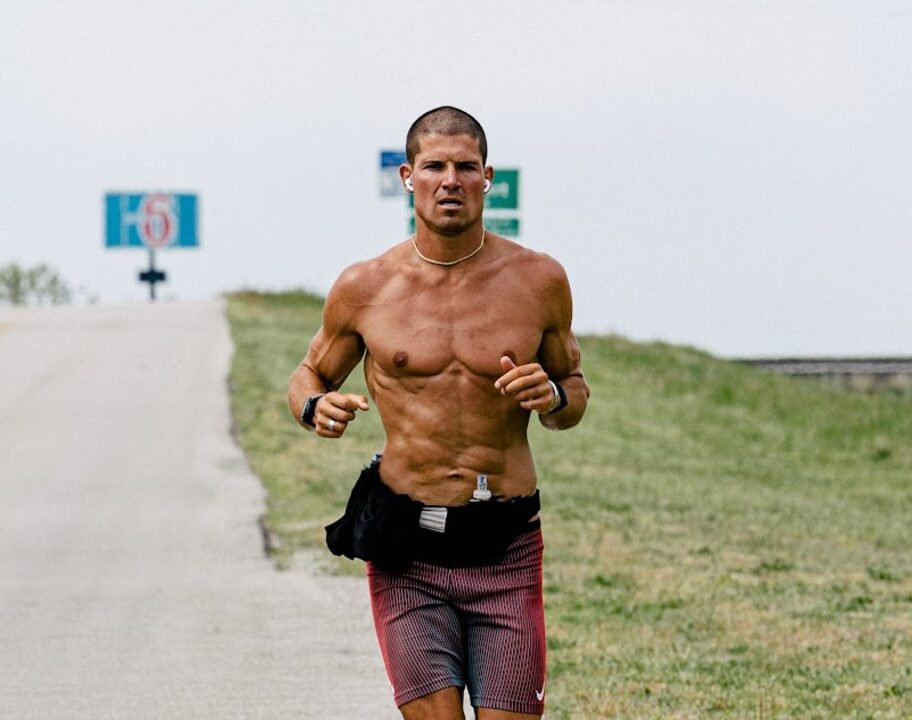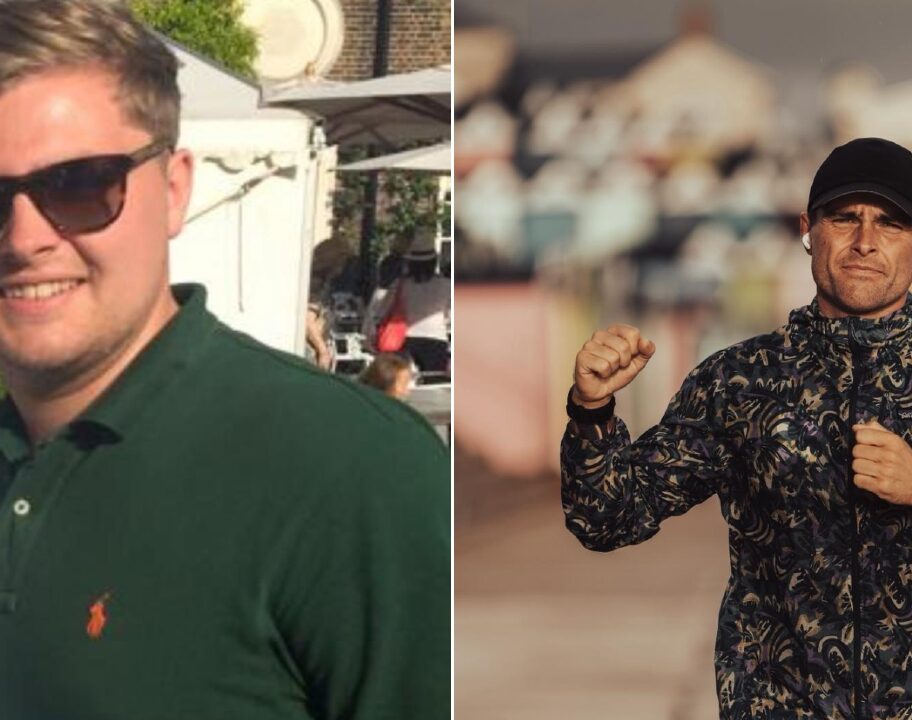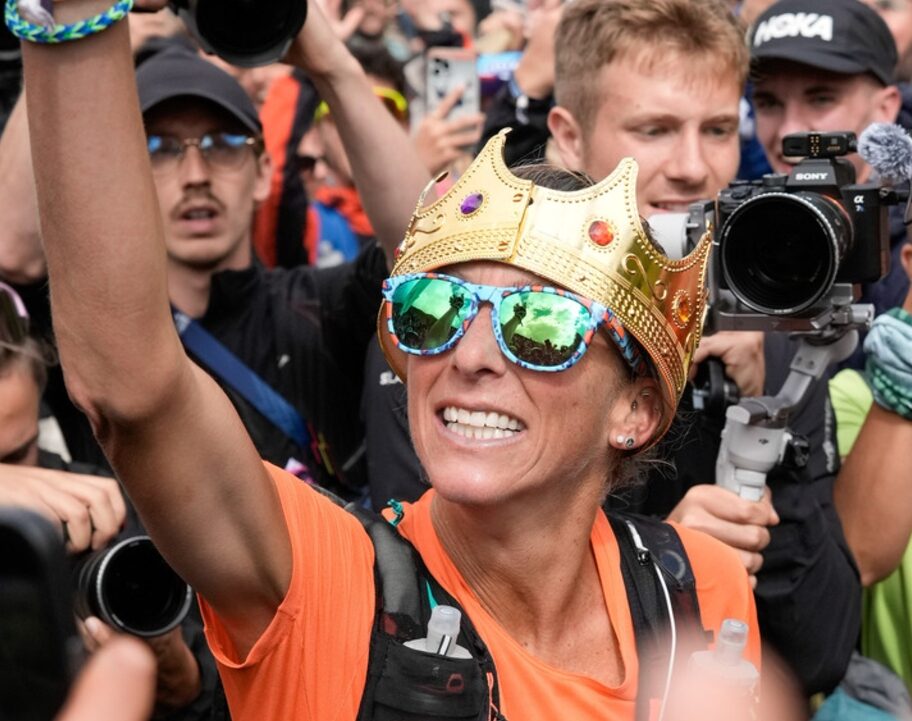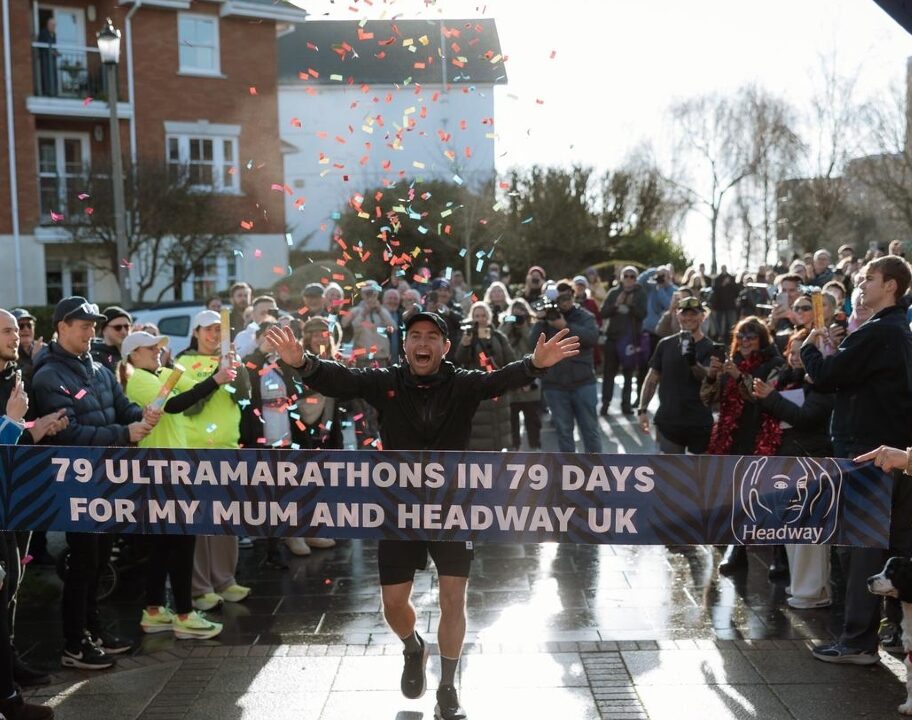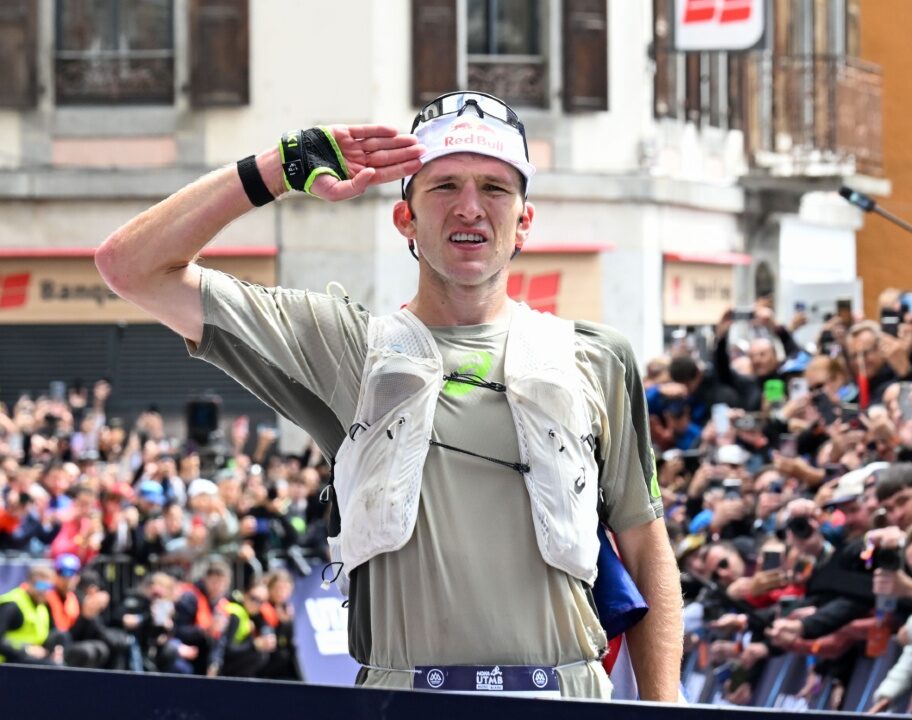You’ve hit that ‘enter now’ button on a marathon, and now it’s time to start training. When you start ramping up your run mileage to train for a marathon, it’s important to have the right gear so that you can stay consistent, recover faster and get the most out of each session.
We guide you through all the key bits of running kit and accessories for your marathon training, and for race day. From the essentials to the added extras, this is your go-to marathon kit list to get ready for your next start line.
Note: when you purchase through some links on our site, we may earn a small affiliate commission.
Marathon running shoes
Let’s start with the most important bit of marathon gear: running shoes. As your mileage increases, it becomes even more vital to ensure you’re running in shoes that suit your individual biomechanics and running gait. Shoes with the wrong drop, not enough cushioning or a lack of stability can quite quickly contribute to running injuries that will scupper your marathon training before you’ve even started. If your current shoes are getting worn out, or you’re not convinced you’re running in shoes that are right for you – it’s a good idea to get your footwear sorted before your training really ramps up.
RELATED: What does drop mean in running shoes?
Running shoes for marathon training
For your training runs, particularly the long steady miles, you want to prioritise comfort. As a starting point, we’d recommend a highly cushioned running shoe to relieve some of the impact on your joints that comes with the long miles. If you tend to overpronate, consider going for a stability shoe – these are created with additional stiffness and cushioning to prevent your foot rolling in so much during ground contact.
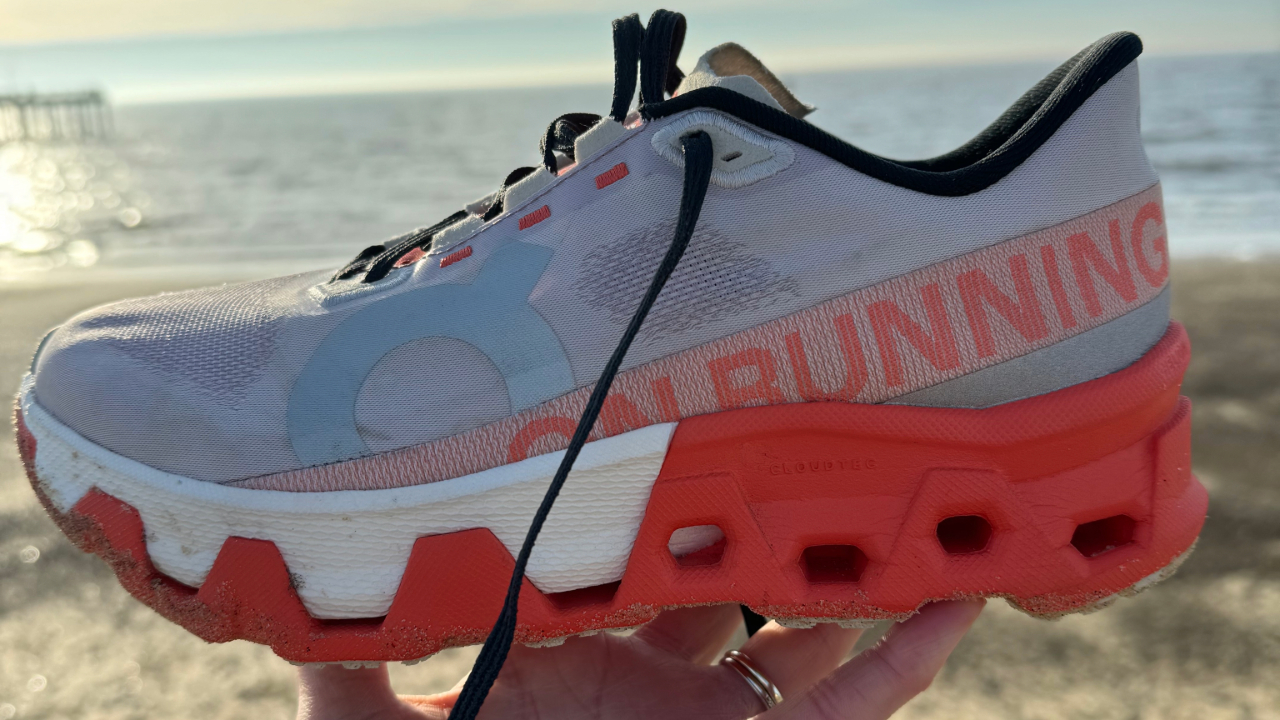
If you’re looking for an excuse to expand your running shoe wardrobe, you could also consider getting a slightly stiffer shoe with higher energy return and a forward rolling propulsive feel for your tempo runs and interval sessions. Though shoes like the ASICS Novablast or the On Cloud Monster Hyper (which we recently reviewed over on TRI247) act as a solid ‘do it all’ shoe that balance cushioning with energy return so you get the best of both worlds.
Race day ‘super shoes’
Plenty of runners will race in the shoes they’ve trained in. But if you want a bit of extra free speed (and you don’t mind paying for it!) you could consider treating yourself to some so-called running ‘super shoes’. These are run shoes which feature a carbon plate in the midsole, alongside premium high energy return foam. The carbon plate essentially acts like a spring, giving a boost in energy return when your foot strikes the ground helping to give you additional propulsion with every stride. The stiffness of the shoes also helps to reduce ankle flexion and minimises energy loss. So far, the research suggests that even ‘slower’ runners can see an increase in speed and efficiency when running in carbon shoes.
Super shoes first came to the mainstream with the OG Nike Vaporfly 4% shoes – which claimed to improve running speed by 4%. These days the majority of the big running shoe brands have their own super shoes – including the On Cloudboom Echo, the ASICS MetaSpeed range, the Saucony Endorphin Pro and the Adidas Adizero Pro and Prime shoes. It’s important to double check the stack height of your super shoe of choice is 40mm or less though, to comply with World Athletics rules.
No new shoes on race day
If you’re going to get some race-specific shoes, make sure you’ve ticked off a few training runs in them so you don’t get any nasty surprises such as blisters. It’s also worth choosing a race shoe with a similar drop to your training shoes so there’s not too drastic a change in your run form.
Running wearables and gadgets
You don’t have to go high tech with your marathon training. But there are a few gadgets and wearables that can help to make training more enjoyable, and ensure you’re training efficiently to maximise your time and avoid injury or burn out. Here’s what we’d recommend:
GPS running/fitness watch
You might not want to upload all your long runs to Strava – though we will say that marathon training is the ultimate way to rake in the kudos. But even so, it’s worth using a GPS running watch. This will allow you to track your progress and monitor your mileage. And watches such as the COROS Pace Pro also allow you to create routes, displaying a map on the screen with turn by turn navigations. This will make it easier to explore new routes on your long runs, without worrying about getting lost.
Headphones
Most event organisers don’t allow headphones on race day for safety reasons. Besides, you’ll miss out on all the race day atmosphere if you’re plugged into your headphones. But for all those long training runs, you’ll appreciate being able to tune into your motivational playlist or binge-listen your favourite podcast.
We’d recommend going for bone conduction or open ear designs such as the Shokz OpenRun or OpenFit headphones, or the Suunto Wing. This style of headphone ensures that you can still maintain awareness of your surroundings while you’re out running, particularly important if you’re running on the road. They’re also sports-specific so they’re lightweight and waterproof.
Some event organisers do allow bone conduction-style headphones to be worn during the race, so if you really can’t bear the thought of running without music on race day – it’s worth checking the specific rules of the race you’ve entered.
Heart rate monitor
A heart rate monitor is such an underrated bit of kit when it comes to being able to manage your effort, train with precision and pace yourself to perfection on race day. Using heart rate data gives you feedback on exactly how hard you’re working, in real time. Once you get to know your heart rate zones and how to use them, this means you can ensure you’re working at the right intensity during training sessions to get the desired training effect. Whether that’s easy long runs to improve your aerobic capacity. Or hard interval sessions to turbo charge your VO2 max.
On race day, running to heart rate can help you to avoid making the mistake almost all marathon runners make at least once: setting off too fast and hitting the wall later on in the race, resulting in a far slower overall finish time than they are capable of. Gather heart rate data in training, and you’ll know exactly how hard you can push on race day without blowing up.
Chest strap style heart rate monitors can cause chafing – particularly if you’re also wearing a sports bra. We prefer the arm band heart rate monitors, such as the Coros HR monitor or the Wahoo TICKR FIT. Optical sensors are super accurate these days, and the arm band design is less likely to cause chafe or feel restrictive compared to a chest strap.
Running clothing
If you’re about to embark on your first marathon training cycle, trust us when we say you’ll appreciate expanding your running kit wardrobe. Mainly because the more kit you have, the less often you have to do laundry. That’s runner’s logic 101. So what should you look for when getting new running kit for marathon training?
Tights and shorts
If you’re going to be training through the fall/winter and early spring, having at least one pair of full length running tights will come in handy to keep you warm in cooler conditions. Look for tights with compressive materials, which can help to improve blood flow and reduce muscle fatigue during longer sessions.

When it comes to shorts, if thigh chafing might be an issue for you consider going for a slightly longer length and opting for running shorts with built-in undershorts to reduce friction.
It’s also useful to go for running tights and shorts with pockets for marathon training so you can easily carry your phone, keys, gels and any other essentials. Trail-specific gear is actually great for this, even if you’re training for a road marathon. Pockets galore!
Running tops and jackets
It’s time to ditch that old cotton finisher shirt. When you’re training often, and going long, you want to stick to lightweight, technical fabrics which are quick-wicking and fast-drying. Again, it depends on the time of year that you’ll be doing the bulk of your training. But having a couple of lightweight long-sleeved options alongside short sleeves and singlets can be useful for staying comfortable when the weather is cooler or changeable.
For winter marathon training, it’s well worth getting yourself a decent winter running jacket. Those long, easy runs can quite quickly get miserable if you’re freezing cold and/or soaking wet. Look for a jacket with reflective details, and water-resistant fabric which still has breathable sections for max comfort.
Socks
Getting some good running socks can be a game-changer for avoiding blisters and keeping your feet in the best shape possible while marathon training. Avoid thick cotton socks and instead get running-specific socks made from breathable, fast-drying materials. This will help to keep your feet comfortable, reduce the eau de fromage emitting from your running shoes, and make it less likely that you’ll get blisters and hot spots. It comes down to personal preference, but crew socks can be a good idea as they’re less likely to slip down compared to ankle socks.
Running cap
For hot weather training, a running cap is an obvious addition to your kit to keep the sun off your face and protect your scalp from UV. But a cap is also actually really handy for rainy conditions too – the peak stops rain water running into your eyes.
Sports sunglasses
Like a cap, sunglasses are a good idea to protect your eyes from the sun. Plus it means no one will be able to see the dead look in your eyes when you’re struggling through the final yards of your first 20 mile training run. Go for sport specific glasses (we highly rate the SunGod range – many of which can easily double up as your everyday sunnies). They’ll be designed not to slip down your nose once you work up a sweat, and the lenses will offer better clarity.
Nutrition and hydration for marathon training
Stepping up to the marathon distance means your nutrition and hydration becomes more important than ever, both for training and racing. Getting to the start line fit and healthy means being able to train consistently and recover effectively – neither of which you’ll be able to do if you’re not fuelling adequately. And come race day, getting your nutrition and hydration wrong can have a major impact on your performance.
Marathon nutrition
You need to experiment with sports nutrition products during training to find what works best for you. Gels are typically the easiest to take while running, and provide easily-soluble carbohydrates. But not everyone can stomach them. You can also try gummy sweets or even real food options such as sliced dates. Try out a few different options in training to find the product, and the quantity, that is effective for you. Make a plan for how often you’ll fuel and what with during your marathon and do your best to stick to it.
Hydration
For almost all of us, rehydrating with plain water isn’t enough during training and racing. When you sweat, you lose electrolytes which play a vital role in muscle function. If you don’t replenish your electrolytes, you can end up suffering from cramp and a reduced ability to perform. Make use of hydration tablets or sports drinks, and ensure you take some of these before you start longer sessions and your race so that you’re already hydrated – rather than firefighting. If it’s going to be hot on race day and you’re a heavy sweater, you could also consider using salt capsules/tablets (such as SaltStick fast chews). But only do so if you’ve tried this out in training.
Get a hydration vest
A hydration vest/back pack is a really useful addition to your running gear for marathon training. Fitted with a bladder and an easily accessible straw, wearing a hydration vest makes it super easy to get fluids in on the move (without having to carry an annoying water bottle), and it’s a useful way to store your nutrition, extra layers and any other essentials you might want mid-run.
Recovery nutrition
Recovering effectively between run workouts is key to being able to stay consistent. And nutrition plays a big role in recovery. Your body needs to be able to replenish its glycogen stores with carbohydrates so you’ve got the energy reserves to get up and go again. And it needs plenty of protein to facilitate muscular repair, so you can adapt to the training stimulus of the workout you just completed and get stronger.
With the inevitable balancing act that comes with balancing marathon training with work, life and everything else you’ve got going on. Having the time and the energy to get enough of the fuel in can be tricky. Consider using protein shakes with carbohydrate in them (we love the SIS REGO chocolate flavour!) as an easy way to kickstart your recovery after longer/more intense sessions.
Other marathon running gear hacks: the small things that can make a big difference
That’s the essential marathon gear covered. But there are a few little extras you might not think about, that can make the world of difference.
Blister plasters, tape and barrier creams are your secret weapon
Ever been out on a long run and your legs and lungs are doing just fine – but it’s that wildly painful blister you’ve developed that has resulted in you cutting your day short? We’ve all been there! Take blister plasters out with you for your long training runs and in your pocket during your marathon race. That way you can quickly deal with any emerging blisters before they get too painful. You can also use products such as K-tape or Mole Skin to tape up any blister-prone areas before you head out. And a top tip from the ultra-running world is to use barrier creams such as petroleum jelly or even Sudocrem on your feet if you’re really prone to blistering.
RELATED: How to prevent blisters while running
Lube up
Chafing can also be a major issue for marathon runners. Whether it’s inner thighs or bleeding nipples (yep, you read that right!) running the long miles can lead to some seriously painful chafing. Products such as BodyGlide or good old fashioned petroleum jelly are your friend here. Apply liberally to any chafe-prone areas before your long runs, and especially on race day.
Get a sports-specific sunscreen
Training outdoors, regardless of the time of year, means taking steps to protect your skin from the sun. But if you’re swerving the sunscreen because the thought of sweating it out under a layer of that ultra-thick factor 30 you bought at the airport before your last summer holiday is just unbearable. It’s time to get a sports specific sunscreen. Not only are products such as Pelotan designed to be long-lasting and sweat proof, they also maintain some breathability so you don’t get that horrible clammy, sticky feeling.
Post-race gear hacks
We tend to focus heavily on what kit and accessories we need for marathon training and racing. But what about when you finally cross that finish line? After 26.2 miles of toughing it out, there are a few things worth packing in your after-race kit bag that future, marathon finisher, you will really appreciate.
The first thing is a pair of sliders or flip flops. It doesn’t matter how comfortable your running shoes are, after running a marathon you’re going to want to get your feet out of them ASAP. Any sliders/flip flops will do – though we do really like the Oofos recovery sliders which feel like walking on clouds after a hard run.
Next is some wet wipes. You’re going to be sweaty, salty and probably covered in sticky trails of mis-fired energy gel. Until you can get home to a proper shower, you’ll appreciate the fresh feeling of being able to get the worst of it off with a wet wipe or 10 before the journey home.
Finally, think about your post-race clothing. You might be really hot when you’ve just finished. But you can find after a marathon your body goes a little haywire and you’re flipping between feeling too hot and shivering with cold. Pack some lightweight layers so you’ve got options to get yourself comfortable.

